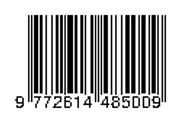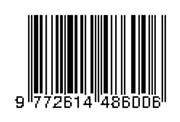Discrete Wavelet Transform Applied to 3-Phase Induction Motor for Air Gap Eccentricity Fault Diagnosis
DOI:
https://doi.org/10.26905/jeemecs.v6i2.10707Keywords:
Induction Motor, Air-gap Eccentricity, Discrete WaveletAbstract
Induction motors consume about 60% of the energy in industry, indicating that they are an important part of the industry. Despite their sturdy construction, these induction motors are often susceptible to damage from prolonged use without maintenance. Bearing failure accounts for up to 40% of all failures and can result in serious engine damage if not treated promptly. For effective operation, this failure must be continuously monitored, otherwise it may cause serious damage to the induction motor. Normal vibration monitoring is difficult as it requires the use of expensive sensors. To detect and localize these faults, a new method of performing leakage flux analysis is widely used. In this paper, failure due to gap eccentricity is predicted by decomposing the waveform of the leakage flux spectrum using a discrete wavelet transform. The proposed method was evaluated based on the leakage flux obtained from a 1.5 kW induction motor. Experimental results have confirmed the effectiveness of the method used to detect eccentricity failures.Downloads
References
A. J. Bazurto, E. C. Quispe, and R. C. Mendoza, “Causes and failures classification of industrial electric motor,†in 2016 IEEE ANDESCON, 2016, pp. 1–4.
A. Glowacz, “Fault diagnosis of single-phase induction motor based on acoustic signals,†Mech. Syst. Signal Process., vol. 117, pp. 65–80, 2019.
D.-J. Choi, J.-H. Han, S.-U. Park, and S.-K. Hong, “Diagnosis of electric motor using acoustic noise based on CNN,†in 2019 22nd International Conference on Electrical Machines and Systems (ICEMS), 2019, pp. 1–4.
G. Singh and V. N. A. Naikan, “Infrared thermography based diagnosis of inter-turn fault and cooling system failure in three phase induction motor,†Infrared Phys. Technol., vol. 87, pp. 134–138, 2017.
S. W. Oh, C. Lee, and W. You, “Gear reducer fault diagnosis using learning model for spectral density of acoustic signal,†in 2019 International Conference on Information and Communication Technology Convergence (ICTC), 2019, pp. 1027–1029.
W. Touti, M. Salah, K. Bacha, Y. Amirat, A. Chaari, and M. Benbouzid, “An improved electromechanical spectral signature for monitoring gear-based systems driven by an induction machine,†Appl. Acoust., vol. 141, pp. 198–207, 2018.
J. A. Antonino-Daviu, A. Quijano-Lopez, M. Rubbiolo, and V. Climente-Alarcon, “Advanced analysis of motor currents for the diagnosis of the rotor condition in electric motors operating in mining facilities,†IEEE Trans. Ind. Appl., vol. 54, no. 4, pp. 3934–3942, 2018.
S. Choi et al., “Fault diagnosis techniques for permanent magnet AC machine and drives—A review of current state of the art,†IEEE Trans. Transp. Electrif., vol. 4, no. 2, pp. 444–463, 2018.
H. Henao et al., “Trends in fault diagnosis for electrical machines: A review of diagnostic techniques,†IEEE Ind. Electron. Mag., vol. 8, no. 2, pp. 31–42, 2014.
E. Artigao, A. Honrubia-Escribano, and E. Gómez-Lázaro, “In-service wind turbine DFIG diagnosis using current signature analysis,†IEEE Trans. Ind. Electron., vol. 67, no. 3, pp. 2262–2271, 2019.
N. Husnah, D. A. Asfani, and I. M. Y. Negara, “Fault Detection Experiment of Unbalanced Voltage and Air Gap Eccentricity on Induction Motor Using a Flux Sensor,†JAREE (Journal Adv. Res. Electr. Eng., vol. 7, no. 1, 2023.
N. Yassa, M. Rachek, and H. Houassine, “Motor current signature analysis for the air gap eccentricity detection in the squirrel cage induction machines,†Energy Procedia, vol. 162, pp. 251–262, 2019.
K. Zhu, Y. San Wong, and G. S. Hong, “Wavelet analysis of sensor signals for tool condition monitoring: A review and some new results,†Int. J. Mach. Tools Manuf., vol. 49, no. 7–8, pp. 537–553, 2009.
A. L. O. Vitor, P. R. Scalassara, W. Endo, and A. Goedtel, “Induction motor fault diagnosis using wavelets and coordinate transformations,†in 2016 12th IEEE International Conference on Industry Applications (INDUSCON), 2016, pp. 1–8.
A. Bouzida, O. Touhami, R. Ibtiouen, A. Belouchrani, M. Fadel, and A. Rezzoug, “Fault diagnosis in industrial induction machines through discrete wavelet transform,†IEEE Trans. Ind. Electron., vol. 58, no. 9, pp. 4385–4395, 2010.
R. Kechida, A. Menacer, and H. Talhaoui, “Approach signal for rotor fault detection in induction motors,†J. Fail. Anal. Prev., vol. 13, no. 3, pp. 346–352, 2013.
R. S. Widagdo, D. A. Asfani, and I. M. Y. Negara, “Detection of Air Gap Eccentricity on Three-Phase Induction Motor Using 3-Axis Digital ELF Gaussmeter,†in 2021 3rd International Conference on High Voltage Engineering and Power Systems (ICHVEPS), 2021, pp. 1–6.
G. Yu, S. Mallat, and E. Bacry, “Audio denoising by time-frequency block thresholding,†IEEE Trans. Signal Process., vol. 56, no. 5, pp. 1830–1839, 2008.
C. Ben and G. Ying, “Li hongwei, Gong Cheng,‘Speech enhancement using modified minimum square error short time spectral amplitude estimator,’†in IEEE conference on natural language processing and knowledge engineering, 2003, pp. 293–298.
N. Bessous, S. E. Zouzou, S. Sbaa, and W. Bentrah, “A comparative study between the MCSA, DWT and the vibration analysis methods to diagnose the dynamic eccentricity fault in induction motors,†in 2017 6th International Conference on Systems and Control (ICSC), 2017, pp. 414–421.
Downloads
Published
Issue
Section
License
Our ethic statements are based on COPE’s Best Practice Guidelines for Journal Editors.
Publication decisions
The editor is responsible for deciding which of the articles submitted to the journal should be published.
The editor may be guided by the policies of the journal's editorial board and constrained by such legal requirements as shall then be in force regarding libel, copyright infringement and plagiarism. The editor may confer with other editors or reviewers in making this decision.
Fair play
An editor at any time evaluate manuscripts for their intellectual content without regard to race, gender, sexual orientation, religious belief, ethnic origin, citizenship, or political philosophy of the authors.
Confidentiality
The editor and any editorial staff must not disclose any information about a submitted manuscript to anyone other than the corresponding author, reviewers, potential reviewers, other editorial advisers, and the publisher, as appropriate.
Disclosure and conflicts of interest
Unpublished materials disclosed in a submitted manuscript must not be used in an editor's own research without the express written consent of the author.
Duties of Reviewers
Contribution to Editorial Decisions
Peer review assists the editor in making editorial decisions and through the editorial communications with the author may also assist the author in improving the paper.
Promptness
Any selected referee who feels unqualified to review the research reported in a manuscript or knows that its prompt review will be impossible should notify the editor and excuse himself from the review process.
Confidentiality
Any manuscripts received for review must be treated as confidential documents. They must not be shown to or discussed with others except as authorized by the editor.
Standards of Objectivity
Reviews should be conducted objectively. Personal criticism of the author is inappropriate. Referees should express their views clearly with supporting arguments.
Acknowledgement of Sources
Reviewers should identify relevant published work that has not been cited by the authors. Any statement that an observation, derivation, or argument had been previously reported should be accompanied by the relevant citation. A reviewer should also call to the editor's attention any substantial similarity or overlap between the manuscript under consideration and any other published paper of which they have personal knowledge.
Disclosure and Conflict of Interest
Privileged information or ideas obtained through peer review must be kept confidential and not used for personal advantage. Reviewers should not consider manuscripts in which they have conflicts of interest resulting from competitive, collaborative, or other relationships or connections with any of the authors, companies, or institutions connected to the papers.
Duties of Authors
Reporting standards
Authors of reports of original research should present an accurate account of the work performed as well as an objective discussion of its significance. Underlying data should be represented accurately in the paper. A paper should contain sufficient detail and references to permit others to replicate the work. Fraudulent or knowingly inaccurate statements constitute unethical behavior and are unacceptable.
Originality and Plagiarism
The authors should ensure that they have written entirely original works, and if the authors have used the work and/or words of others that this has been appropriately cited or quoted.
Multiple, Redundant or Concurrent Publication
An author should not in general publish manuscripts describing essentially the same research in more than one journal or primary publication. Submitting the same manuscript to more than one journal concurrently constitutes unethical publishing behaviour and is unacceptable.
Acknowledgement of Sources
Proper acknowledgment of the work of others must always be given. Authors should cite publications that have been influential in determining the nature of the reported work.
Authorship of the Paper
Authorship should be limited to those who have made a significant contribution to the conception, design, execution, or interpretation of the reported study. All those who have made significant contributions should be listed as co-authors. Where there are others who have participated in certain substantive aspects of the research project, they should be acknowledged or listed as contributors.
The corresponding author should ensure that all appropriate co-authors and no inappropriate co-authors are included on the paper, and that all co-authors have seen and approved the final version of the paper and have agreed to its submission for publication.
Disclosure and Conflicts of Interest
All authors should disclose in their manuscript any financial or other substantive conflict of interest that might be construed to influence the results or interpretation of their manuscript. All sources of financial support for the project should be disclosed.
Fundamental errors in published works
When an author discovers a significant error or inaccuracy in his/her own published work, it is the author’s obligation to promptly notify the journal editor or publisher and cooperate with the editor to retract or correct the paper.










